Some links on this page are affiliate links. This means we may earn a commission at no additional cost to you if you click through and make a purchase, you can check our Affiliate Disclosure. Thank you for your support!
Unlock the Delights of Cheeses – Cheese has a special place in the hearts of food lovers everywhere. It’s a versatile star in the culinary world, turning a simple meal into something extraordinary. People love it for its rich flavors, varied textures, and how it brings us together, whether over a pizza or a fancy cheese platter.
🌟 Why Cheese Captivates Foodies Around the World
Cheese wins over foodies globally because it’s full of taste and tradition. Every slice of cheese carries a story from a specific corner of the world. Food enthusiasts adore how it can transport them to different countries and cultures with just one bite. The fact that there’s a cheese for every palate also helps. Whether it’s the tang of a sharp cheddar or the creaminess of a soft brie, cheese has a unique way of sparking joy in every bite.

✨ The Art of Cheese-Making: A Peek into Tradition and Innovation
Cheese-making is an art that goes back centuries. It’s a craft that involves transforming milk into various flavors and textures. Cheesemakers start with quality milk and then add cultures to it. They heat the milk and add rennet to separate the curds from the whey. After being pressed, aged, and sometimes seasoned with herbs or spices, the curds become the cheese we love.
But cheese-making isn’t just about keeping old traditions alive. It’s also about innovation. Today, cheesemakers are creating new types of cheese by experimenting with aging processes and blending new flavors. This blend of tradition and innovation keeps the world of cheese exciting and constantly evolving.
Starting Your Cheese Adventure
Embarking on a cheese adventure means entering a world of tastes and textures. It’s a journey where each cheese offers a new experience and a story that reflects its origin and the skill of its maker.
🗺️ Understanding the Basics: Cheese Categories Explained
Let’s break down the basics. Cheeses come in many forms, but we can group them into a few main categories:
- Fresh Cheeses: These cheeses, like Mozzarella and ricotta, have a high moisture content and are usually mild in flavor. They are soft and often spreadable, and you’ll typically find them in dishes like salads or as a topping for pizzas.
- Aged Fresh Cheeses: A step beyond fresh cheeses, these include varieties like feta. They are still moist but have more bite to their taste due to a short aging process.
- Soft Cheeses: Brie and camembert fall into this creamy, decadent category. They often have a white rind that’s edible and offers a rich, buttery flavor.
- Semi-Soft Cheeses: These are the perfect middle ground. Cheeses like Havarti and Munster are a bit firmer and have a more robust flavor than soft cheeses, making them great for melting.
- Hard Cheeses: Think of aged cheddar or Parmesan. It takes a long time for these cheeses to dry out, so they only have a little moisture. Grabbing them over food gives them a sharp, intense flavor.
- Blue Cheeses: With their distinctive veins of blue mold, these cheeses, like Gorgonzola, pack a flavor punch and are often crumbly in texture.
Understanding these categories helps you know what to expect from a cheese and how to pair it with other foods.
ALSO READ: Revealing The Magic Of Eggs In Worldwide Cuisine
🛠️ Tools of the Trade: Must-Have Accessories for Every Cheese Aficionado
To truly enjoy cheese, you’ll need the right tools:
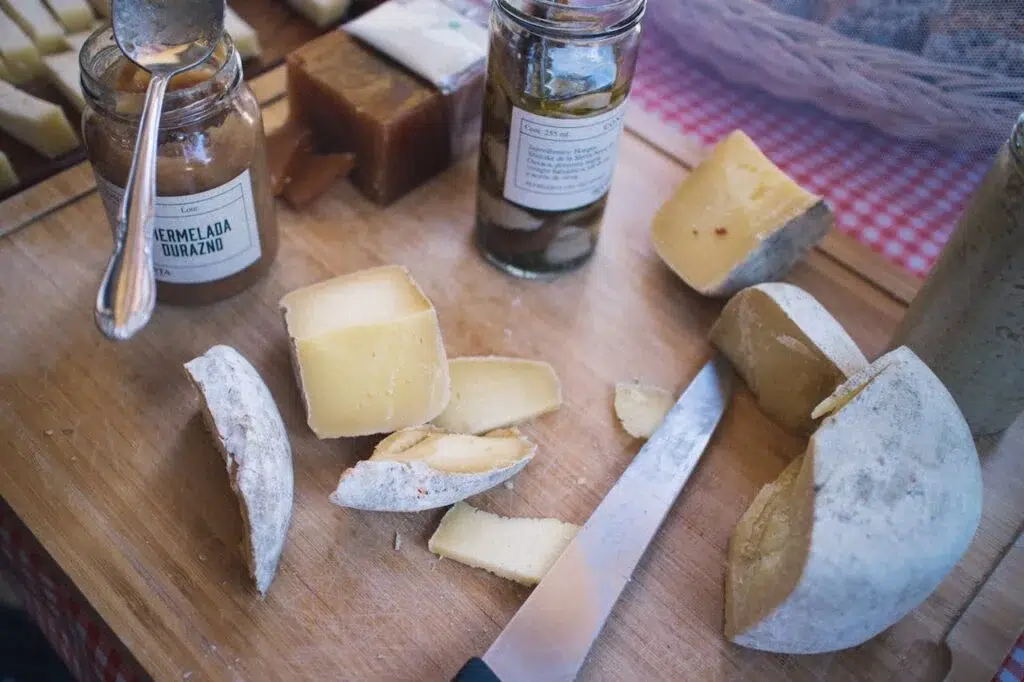
- Cheese Knives: There’s a knife for every type of cheese. Soft cheeses need a knife that can handle stickiness, while hard cheeses require something sturdier.
- Cheese Board: A good board not only serves as a serving platter but also helps you cut and display your cheese selection.
- Cheese Markers: These handy tools let you label your cheeses so guests know what they enjoy.
- Storage Wraps: To keep cheese fresh, you’ll want to wrap it properly. Special cheese paper allows the cheese to breathe and maintain its flavor.
- Cheese Grater: For hard cheeses, a grater with different size options is essential. It lets you add freshly grated cheese to dishes with ease.
With these tools ready, you’re all set to dive into the delicious world of cheeses with confidence.
ALSO READ: The Ultimate Guide To Enhancing Your Recipes With Dried Herbs
Europe’s Cheese Crown Jewels
Europe is a treasure trove of the world’s most beloved cheeses. Each country brings its unique flavors and centuries-old cheese-making traditions to the table. Let’s explore the crown jewels of European cheese, from the creamy delights of France to the rich, savory flavors of Italy and the often overlooked but equally delicious cheeses of Switzerland.
🇫🇷 France’s Finery: Exploring Brie, Camembert, and Roquefort

France is famous for its exquisite cheese. Brie, the “Queen of Cheeses,” delights with its creamy interior and edible rind. It melts beautifully and makes any cheese platter look more fancy. Camembert, which is related to Brie, has a more earthy flavor and a smooth texture that goes well with red wine and a crusty baguette. Then there’s Roquefort, a blue cheese with a sharp, tangy flavor profile. It crumbles perfectly over salads and steaks, adding a bold touch to classic dishes.
🇮🇹 Italy’s Pride: The World of Parmesan, Gorgonzola, and Mozzarella
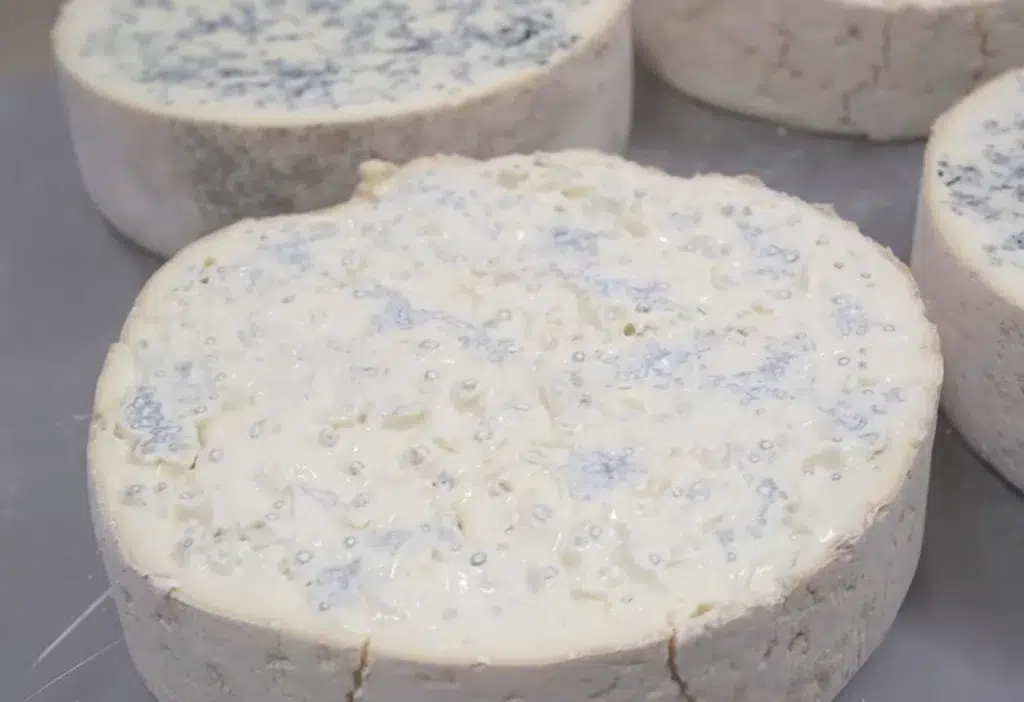
Italy’s cheese credentials are just as impressive. Parmesan, known in Italy as Parmigiano-Reggiano, is a hard cheese with a granular texture and nutty taste. It’s not just for grating over pasta; enjoy it in chunks with a drizzle of balsamic vinegar. Gorgonzola, with its blue veins, offers a spicy kick to risotto and pasta dishes. And let’s not forget Mozzarella, the star of pizzas and Caprese salads, celebrated for its soft texture and fresh, milky flavor.
🇨🇭 Switzerland’s Hidden Gems: Why Swiss Cheeses Are More Than Just Fondue

Switzerland may be synonymous with fondue, but Swiss cheeses offer much more. Emmental, with its sweet and nutty taste, is perfect for sandwiches and adds a smooth melt to any dish. Gruyère, another Swiss favorite, brings a slightly salty and creamy flavor for baking into quiches and gratins. Then there’s Appenzeller, which has a fruity tang that goes well with rye bread and pairs excellently with a robust Swiss wine.
Beyond Europe – A Global Cheese Mosaic
The love for cheese knows no borders, stretching from the rolling hills of Europe to the diverse landscapes of the Americas and beyond. The world of cheese is a tapestry woven with tradition, innovation, and passion for this culinary staple.
🇺🇸 America’s Artisanal Surge: The Rise of Craft Cheese
In the United States, a revolution in artisanal cheese is underway. Craft cheesemakers across the country are turning local milk into small-batch masterpieces. They handcraft each piece, paying homage to time-honored methods while adding a touch of American innovation. Take Vermont cheddar, for instance, which delivers a sharp and mature flavor developed through careful aging. Or consider California’s goat cheeses, known for their tangy, fresh taste and silky texture that reflect the state’s terroir.
🇦🇺 Australia’s Innovations: Unique Cheeses Down Under
Australia, with its rich dairy lands, needs to catch up in the cheese game. Australian cheese makers are experimenting and succeeding in creating unique cheeses that stand out in the global market. They produce bold wash-rind cheeses that punch in flavor and buttery triple creams that melt in your mouth. Tasmania’s contribution to blue cheese offers a creamy yet robust taste that competes with the best in the world. The innovations here are not just about taste but also about sustainable practices that add to the cheese’s appeal.
🌍 Celebrating Diversity: Uncommon Cheeses from Unexpected Places
The cheese world is full of surprises with hidden gems from corners of the globe one wouldn’t expect. In Brazil, Queijo Minas is a soft, mild cheese staple in local cuisine. South Africa brings us Boerenkaas, a farm-style cheese that encapsulates the bold flavors of the region. And from Japan, there’s Sakura Cheese, a delightful creation seasoned with cherry leaves for a unique taste of the locale. These uncommon cheeses offer a glimpse into the dairy delights that different cultures have to offer, inviting us to explore the world through our taste buds.
Pairing Like a Pro
Choosing the right pairings for cheese elevates the tasting experience, turning a simple cheese board into a gastronomic adventure. With a few tips, you can match your cheeses with their perfect partners, from wines to sweet and savory delights.
🍷 Perfect Wine Pairings for Your Cheese Platter
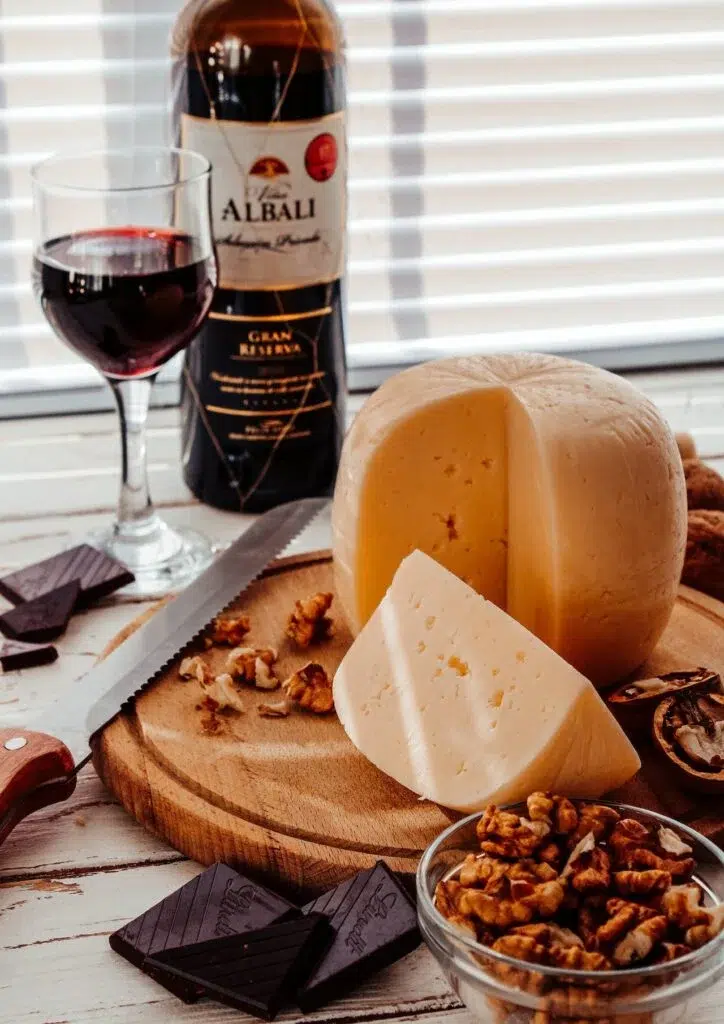
Pairing wine and cheese is an art that enhances the flavors of both. Here are some pairings to help you become an instant hit at your next gathering:
- Soft Cheeses: Creamy cheeses like Brie and Camembert love the company of a light and bubbly champagne or a crisp chardonnay. These wines cut through the richness with their acidity.
- Hard Cheeses: Aged cheeses such as cheddar and manchego pair well with full-bodied wines like cabernet sauvignon or zesty zinfandel, which stand up to the intense flavors of the cheese.
- Blue Cheeses: The bold and aromatic profiles of blue cheeses match the sweetness of a port or a dessert wine, balancing the intensity with a hint of sweetness.
- Fresh Cheeses: For delicate fresh cheeses like Mozzarella or feta, choose a light sauvignon blanc or a dry rosé to complement their subtleness without overwhelming them.
🍯 Sweet and Savory Companions: Finding the Right Balance

Beyond wine, food pairings can turn cheese into a sensory treat. Here’s how to mix and match:
- Nuts and Dried Fruit: Almonds, walnuts, and dried apricots or figs add texture and a nutty or sweet contrast to your cheese.
- Fresh Fruit: Slices of apple, pear, or clusters of grapes cleanse the palate and add a juicy freshness to each cheese-filled bite.
- Honey and Jams: Drizzle honey over strong cheeses like Gorgonzola for a sweet counterpoint, or spoon a dollop of fig jam beside aged cheddar for a harmony of flavors.
- Charcuterie: Salty meats such as prosciutto or salami bring out the richness in cheese, making for a savory pairing that never disappoints.
- Bread and Crackers: A selection of crusty bread and various crackers provides a blank canvas for cheese, allowing its flavor to shine.
With these pairings, you’ll impress guests and satisfy your palate by bringing out the best in your cheeses.
The Healthful Side of Cheese
Cheese often brings to mind indulgence and rich flavors, but it’s also packed with essential nutrients. Let’s explore the health benefits of cheese and how to enjoy it as part of a balanced diet.
💪 Nutritional Benefits: Unpacking the Good in Gouda and Beyond
Cheese is more than just a tasty treat; it’s a source of essential nutrients:
- Protein: Cheese is rich in high-quality protein, crucial for muscle repair and growth. A slice of gouda can offer a protein boost to keep you full and energized.
- Calcium: As a dairy product, cheese is one of the best sources of calcium, essential for strong bones and teeth.
- Vitamins and Minerals: Many cheeses are full of minerals and vitamins that are good for you, like zinc, phosphorus, selenium, and vitamins A, B12, and riboflavin.
- Healthy Fats: Cheese contains fat, but it also provides conjugated linoleic acid (CLA) and omega-3 fatty acids, which are linked to health benefits such as reduced inflammation.
🏃 Balancing Indulgence with Well-being: Cheese in a Healthy Diet
Enjoying cheese doesn’t mean sacrificing health. Here’s how to include it in your diet responsibly:
- Portion Control: Cheese is calorie-dense, so stick to proper portion sizes. A small chunk can go a long way in adding flavor and nutrition.
- Choose Wisely: Opt for cheeses lower in fat and sodium when possible. Cottage cheese, for instance, is lighter but still offers the nutritional benefits of dairy.
- Pairing: Combine cheese with healthy foods like whole-grain bread, fresh fruit, and nuts for a balanced meal or snack.
- Frequency: Make cheese a part of your diet in moderation. It’s all about balance, so incorporate it alongside other nutrient-dense foods.
If you know what cheese is good for you and how to include it in your diet, you can enjoy its tasty flavor and health benefits.
Storing and Serving Secrets
Proper storage and serving techniques can significantly enhance the life and taste of your cheese. From everyday enjoyment to special occasions, these tips ensure your cheese stays fresh and delivers on flavor.
🧊 Cheese Storage 101: Keeping Your Cheese Fresh and Flavorful

To keep your cheese in peak condition, consider the following:
- Temperature: Store cheese in the coolest part of your refrigerator, ideally between 35°F and 45°F (1.7°C – 7.2°C).
- Airflow: Wrap the cheese in parchment paper, followed by a loose layer of plastic wrap. It protects the cheese while allowing it to breathe.
- Humidity: Some cheeses prefer a bit of moisture. A drawer in your fridge can be a good spot, or you could use a specialized cheese vault.
- Separation: Keep strong-smelling cheeses like blue cheese away from milder ones to prevent flavor crossover.
🎉 Hosting a Cheese Tasting Party: Tips for Success
If you’re looking to impress with a cheese-tasting party, keep these pointers in mind:

- Variety: Offer a range of cheeses—from soft to hard and mild to strong—to cater to all palates.
- Order: Start with the mildest cheese and progress to the strongest so you don’t overwhelm your taste buds early on.
- Accompaniments: Provide an assortment of crackers, bread, fruit, and nuts that complement but don’t overshadow the cheese flavors.
- Labeling: Clearly label each cheese so guests can quickly identify their favorites and explore new tastes.
- Preparation: It’s best to let the cheese come to room temperature an hour before serving. This will help the flavors come out.
By mastering these storing and serving techniques, you can ensure that every cheese experience is as delightful as intended, whether for your enjoyment or shared with friends.
Cooking with Cheese
Cheese transforms meals with its rich flavors and comforting texture. Whether preparing a quick breakfast or an elaborate dinner, incorporating cheese can make all the difference.
🍽️ Cheese-Infused Recipes for Breakfast, Lunch, and Dinner
Here’s how you can weave cheese into every meal:
Breakfast: Start your day with a cheese omelet. Whisk eggs, pour them into a hot pan, and sprinkle shredded cheddar or gouda on top for a melty, delicious breakfast.
Lunch: For a midday meal, a grilled cheese sandwich with a twist is perfect. Combine Mozzarella with a pesto spread between slices of sourdough bread, and grill until golden brown.
Dinner: Create a comforting dinner with a cheesy pasta bake. Layer cooked pasta with ricotta, Parmesan, and your choice of veggies or meat, top with Mozzarella, and bake until bubbly and golden.
🌡️ Mastering the Melt: Techniques for Cooking with Cheese
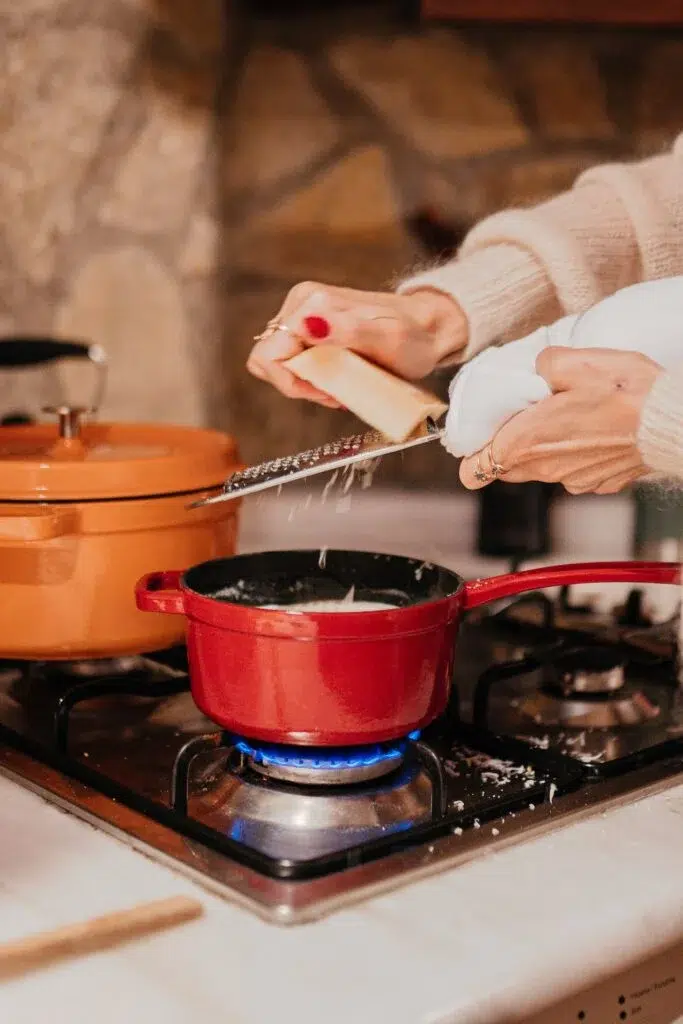
Getting the perfect melt is vital when cooking with cheese:
- Low and Slow: When melting cheese in a sauce or as a topping, use low heat to prevent the cheese from becoming rubbery.
- Pre-Shred: Shred cheese from a block rather than buying pre-shredded. It melts better as it doesn’t contain anti-caking agents.
- Stirring: Constant stirring helps melt cheese evenly, especially in sauces like fondue or alfredo.
- Add Last: If you’re adding cheese to a cooked dish, sprinkle it on top near the end of the cooking time. This approach allows it to melt smoothly without overcooking.
With these recipes and melting techniques, cooking with cheese will become an easy and satisfying way to enhance your daily meals.
Cheese Tourism: Exploring the Cheese Capitals
For cheese enthusiasts, there’s nothing like tasting the region’s specialty at the source. Exploring cheese capitals around the world not only satisfies your palate but also enriches your cultural knowledge.
🏰 Visiting the Meccas of Cheese: A Traveler’s Guide
When you plan a trip to the world’s cheese hotspots, keep these tips in mind:
- Do Your Research: Before you go, research the region’s specialty cheeses and the best local dairies or creameries to visit.
- Book Tours: A lot of well-known cheesemakers offer tours where you can see how the cheese is made and even try the finished product.
- Local Markets: Check out local markets to sample a variety of cheeses and buy some to take home.
- Cultural Etiquette: Be aware of cultural norms, especially when visiting small, artisanal producers. Respect and interest in their craft go a long way.
📅 Cheese Festivals and Events: For the Love of Cheese
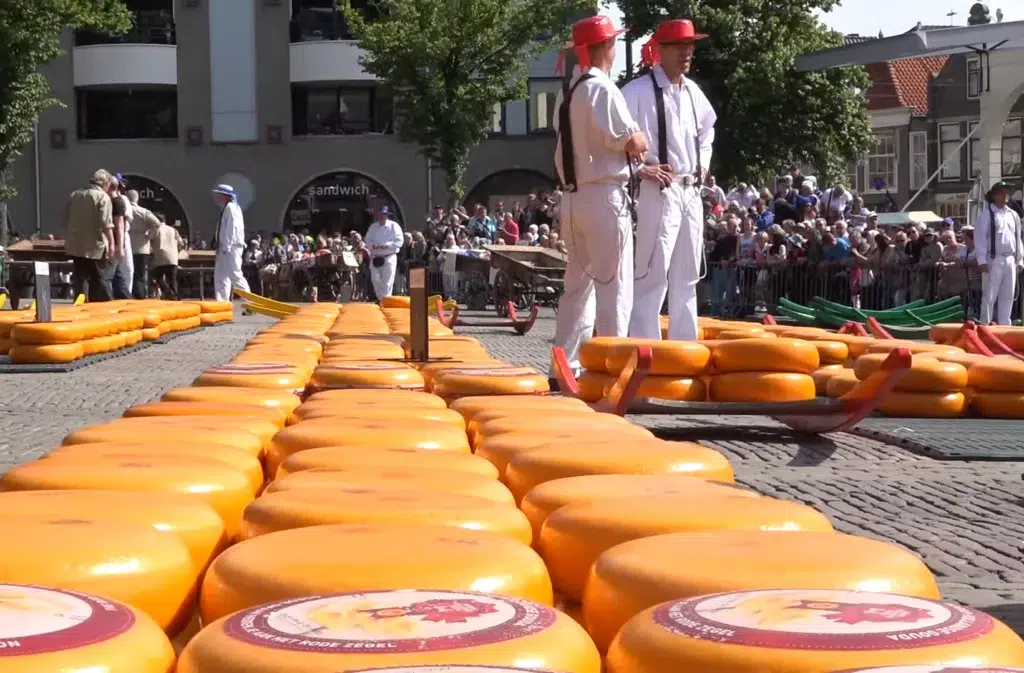
Attending cheese festivals and events offers unique experiences:
- International Events: Look for events like the Cheese Festival in Bra, Italy, or the Mondial du Fromage in France, where cheese makers from all over the world showcase their products.
- Cheese Competitions: Events like the World Cheese Awards allow you to see—and possibly taste—some of the world’s best cheeses.
- Local Cheese Days: Many cheese-producing regions have days dedicated to celebrating their cheese heritage. These often include parades, tastings, and opportunities to meet the makers.
- Workshops: Participate in cheese-making workshops often available at festivals. They give you hands-on experience and a deeper appreciation for the craft.
Exploring the cheese capitals through these avenues not only allows you to taste the world’s finest cheeses but also brings you closer to the traditions and communities behind them.
The Future of Cheese: Trends and Innovations
The cheese industry constantly evolves, blending tradition with innovation to meet new consumer demands and environmental challenges. Here’s what’s shaping the future of cheese.
🌿 Plant-Based Cheese: A New Frontier
Plant-based cheeses are gaining popularity as consumers look for sustainable and dairy-free alternatives. These are the key points:
- Ingredients: Nuts, soy, and root vegetables are used to make cheeses that taste and feel like regular cheeses.
- Nutritional Value: Many plant-based cheeses now offer comparable protein and vitamin content to their dairy counterparts.
- Taste and Texture: Ongoing experimentation and refinement in recipes are improving the taste and reliability of vegan cheeses.
- Sustainability: Plant-based options are often more sustainable, using fewer resources and causing less environmental impact than dairy farming.
🤖 Technology in Cheese-Making: How It’s Shaping the Future
Technology is revolutionizing cheese-making in the following ways:
- Precision Fermentation: This process uses microflora to ferment dairy proteins without cows. It creates dairy-identical cheese while reducing animal farming.
- Data Analytics: Cheese producers use data to optimize everything from milk quality to yield rates, leading to more consistent and higher-quality cheese production.
- Automation: Robots and automated systems handle more of the cheese-making process, ensuring precision and safety while reducing labor costs.
- Traceability: Blockchain technology is improving the traceability of cheese, allowing consumers to verify the origin and authenticity of their cheese.
These innovations are not just passing trends but are paving the way for a more diverse and sustainable future in the world of cheese.
Conclusion: Your Personal Cheese Journey
Embarking on a journey through the world of cheese enriches not only your palate but also your cultural and culinary knowledge. This exploration is continuous and ever-evolving, with each step offering new tastes, traditions, and techniques to discover.
5 FAQs About Cheese
When diving into the world of cheese, many people have questions about selecting, storing, and enjoying this diverse food. Here are answers to some of the most frequently asked questions.
How Do I Choose the Best Cheese?
Look for cheese from reputable sources, such as local dairies or specialty stores. Consider the occasion, whether you want soft cheese for a casual snack or aged cheese for a sophisticated platter. Smell the cheese; it should have a fresh and pleasant aroma. And taste before you buy.
What’s the Best Way to Store Cheese?
Store cheese in your refrigerator’s vegetable drawer, where the temperature is cool and consistent. Wrap it in parchment paper, followed by loosely fitting plastic wrap, or place it in a cheese vault. It lets the cheese breathe, so it doesn’t dry out.
How Long Can I Keep Cheese Before It Goes Bad?
The shelf life of cheese varies widely. Fresh, soft cheeses can last for one to two weeks, while hard, aged cheeses can last for several months if stored properly. Always check the cheese for signs of spoilage, like an off smell or visible mold that wasn’t there when you bought it.
Can I Eat the Rind?
It depends on the cheese. Rinds on cheeses like Brie and Camembert are edible and add flavor and texture. However, the rind on harder cheeses like Parmesan is often too tough to eat and is better suited for adding flavor to soups and stocks.
How Should I Pair Cheese with Wine?
A general rule is to pair lighter cheeses with lighter wines and more pungent cheeses with fuller-bodied wines—for example, pair goat cheese with Sauvignon Blanc and aged cheddar with Cabernet Sauvignon. Remember, personal preference is critical, so feel free to experiment.

